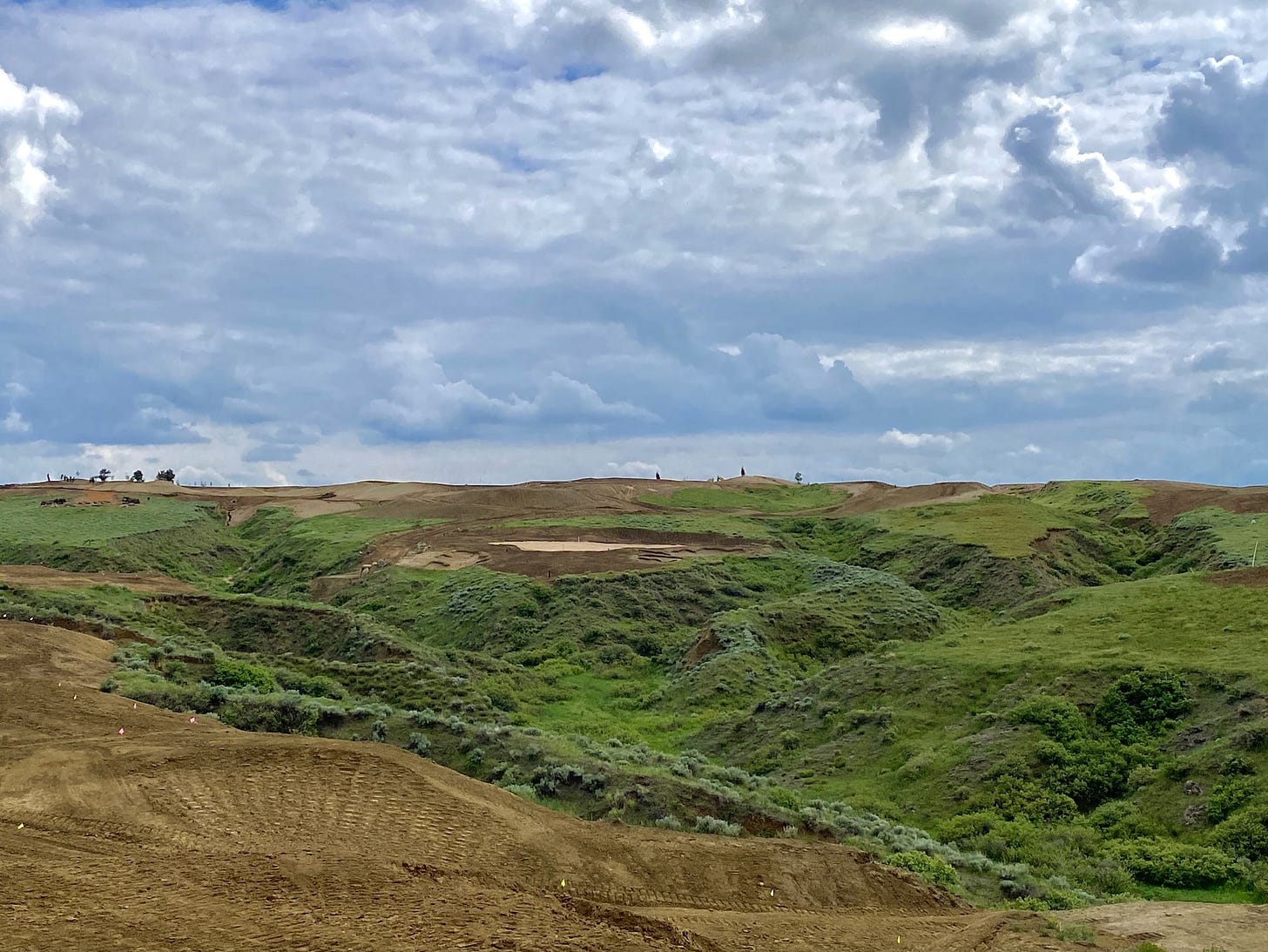RainDance
Everything about RainDance National is big, except for the guy who helped design it and the odds that it won’t hit.
By Matt Ginella
Everything about RainDance National is big, except for the guy who helped design it and the odds that it won’t hit.
It’s also big news a golf course is being built, especially in the wilds of Northern Colorado. According to the National Golf Foundation, only 18 new courses opened in 2019, and some of those were only nine holes. The yardages on the RainDance National scorecard are especially big: From the back tees it will play more than 8,400 yards, making it one of longest courses in the country. The 1,000-year-old arroyos the course is built around are big. The mountains that surround the course are even bigger. The landing areas, greens and expectations for the finished product are also big. And then there is Fred Funk, one of the littlest hitters in professional golf and the co-designer of RainDance National. Nothing is bigger than his smile as he walks the routing and talks about how much fun he has had breaking into the business of course design. Funk, who won the 2005 Players Championship, is quick to point out that with the elevation at nearly 5,000 feet and with many holes playing downhill and firm, fast conditions, the length could be deceiving.
As for the man who hired Funk, he’s also big. As in physical stature and the impact he has had on his community. Martin Lind is a successful developer in Windsor, a small town 45 minutes north of Denver. After building Pelican Lakes in 1999, a 27-hole golf community on the banks of the Cache La Poudre River, Lind looked around for what was next. As he bought more land, what he didn’t see coming was the recession in 2008.
“I was going broke fast, and I was just trying to survive,” says Lind, whose vision is to build communities in which people can work and play without straying too far from home.
At the most desperate of times, Lind looked to trade some of his land for a jet because the banks would let him borrow against a plane. Meanwhile, Funk, who was transitioning from the big purses on the PGA Tour to the smaller checks of the Champions Tour, could no longer justify his own set of wings. That's when the two met. Funk had experienced hands help build RainDance: Harrison Minchew, who spent a career working for Arnold Palmer; and Ed Seay, another Palmer disciple who broke out on his own around the same time Lind thought he might be going broke. The other day Funk, Minchew and Lind sat around a fire pit overlooking what they’ve created, sharing their various perspectives on how and why RainDance will be such a big deal when it opens next year.
It’s big for Funk, 65, because it gives him a new career and a revenue stream as his playing days wind down.
It’s big for Minchew because he came up in an era in which his boss, The King, had as many as 70 new courses on the books in a given calendar year. Now, late in his career, Minchew gets the opportunity to do it the way quality golf should be done—one course at a time.
And it’s big for Lind because he has worked his way out of his financial arroyo and this third-generation farmer from Windsor has created another legacy project.
Having walked the routing and heard the business model, which includes the kind of amenities conducive to young families and resort guests, I’d be willing to place a big bet that RainDance National will soon be hosting big events at which some of the biggest hitters in the world will make everyone else who plays the course feel small.
For more on Raindance National, watch the video and listen to the latest Fire Pit podcast.






